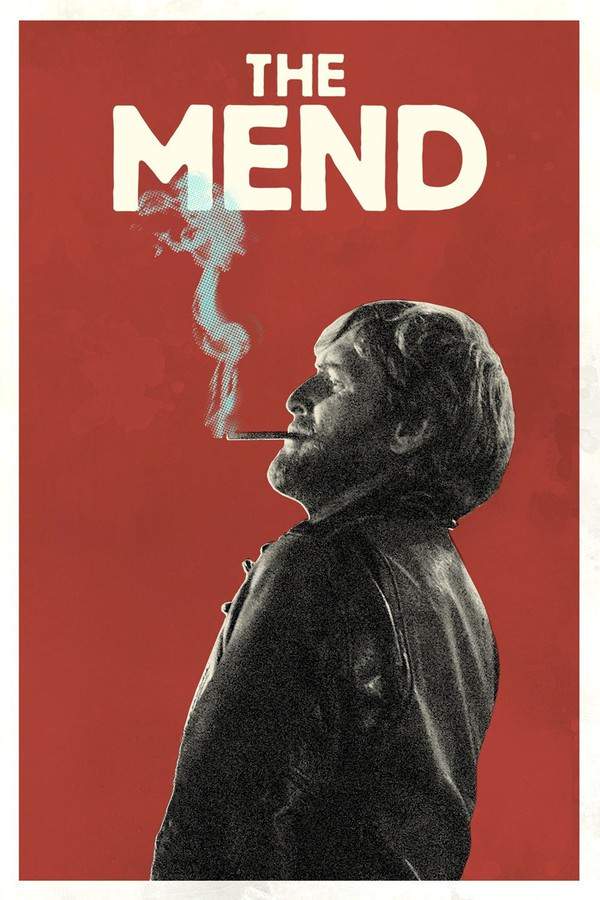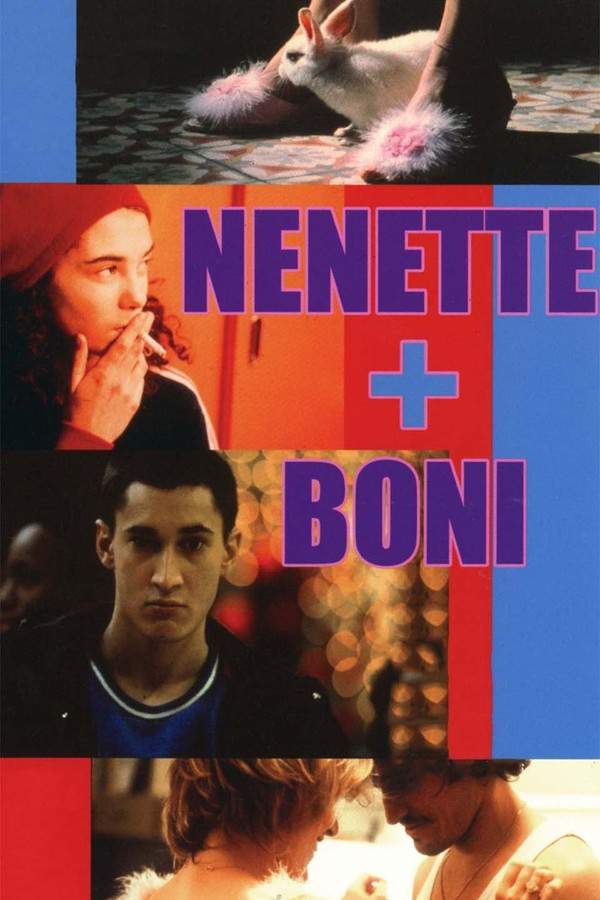
The Mend 2015
Directed by

John Magary
Made by

Cinelicious Pics
The Mend Plot Summary
Read the complete plot summary and ending explained for The Mend (2015). From turning points to emotional moments, uncover what really happened and why it matters.
The film kicks off with Margot (Anya Taylor-Joy) and Tyler (Nicholas Hoult) anxiously awaiting their transport on a dock that leads to an exquisite island dining experience. As they bide their time, Margot lights a cigarette, prompting Tyler to chide her about ruining her palate. With a glance towards the small boat that will take them to their destination, Tyler explains that despite its size, they only cater to 12 exclusive guests for a hefty price of $1250 each, ensuring a substantial profit for themselves.
Upon boarding, they encounter other guests, including Lillian Bloom (Janet McTeer)—a food critic whose effusive praise for Hawthorn’s culinary delights when it first opened has made her something of a gastronomic oracle. Accompanying her is her husband Ted (Paul Adelstein). Tyler shares his admiration for Lillian’s impact on the culinary world, noting how restaurant fortunes often pivot based on her critique. Among the attendees, a trio of boisterous tech entrepreneurs chatter loudly about their financial acumen in hedge funds and cryptocurrency, exuding a sense of confidence that quickly borders on arrogance.
The journey unfolds on the boat, where the captain—far from a mere transporter—gives an introduction to the 30-minute ride to the culinary haven. They are joined by a movie star, John Leguizamo (John Leguizamo), who expresses his annoyance at his assistant Felicity (Aimee Carrero) for selecting such an elaborate affair for dinner. A small bite is served as they sip champagne, with the fare being described in a manner befitting high society. Tyler, ever the foodie, captures the moment with his camera, while Margot’s disinterest sets the tone for an evening that promises more mystery than mere opulence.
The boat arrives at the island, where the guests are greeted by an ensemble of servers and house staff. One server, Elsa (Hong Chau), a restaurant captain, fixes her gaze on Margot with a hint of suspicion, remarking that she wasn’t who Tyler originally intended to accompany him. Tyler admits to a change of plans following a breakup, but Elsa remains unsettled by this revelation.
As the twelve guests settle in, two regulars, Anne (Judith Light) and her husband Richard (Reed Birney), bypass introductions and head straight for the restaurant. Elsa introduces the others to an alluring promise: a unique narrative woven through the menu that has never been told before and will not be again. This sets the stage for a complex evening that involves not only members of the culinary world but also intertwines their alibis and transgressions.
They embark on a tour of the island, a stunning twelve-acre stretch of land with both forested areas and coastal access, explaining that the manila clams they will savor tonight were harvested just moments before their arrival. Commentary that veers into the absurd is offered by one of the tech bros, who jokes about the meat aging process before receiving an unnervingly detailed response from Elsa about the possible consequences—should the meat surpass its ideal aging period. “At this temperature, on the 153rd day, the bacteria, having breached the interior of the flesh, would seep into the customer’s bloodstream and produce a series of very unpleasant symptoms… So, yes. All hell breaks loose!”
Next on the agenda is a visit to the root cellar, where Elsa expertly lists the known allergies of the guests and assures them that the menu accounts for their dietary restrictions. The team arrives at the bunkhouse where the staff resides, a space reminiscent of military barracks. Elsa emphasizes the sense of familial duty among the staff as they work their grueling hours to orchestrate an evening that will remain etched in the memories of their guests. Their labor included the arduous processes of harvesting, gathering, fermenting, and more—an intricate dance executed behind the scenes that will set the atmosphere for the dining experience.
Their journey continues to the moment of entering the Hawthorn restaurant, a stunning space that houses a bustling open kitchen. Margot observes an older woman sitting alone in a dim corner with just a glass of wine, creating an eerie juxtaposition to the otherwise confident face of their dining party. Chef Slowik (Ralph Fiennes) appears, setting the tone as he outlines the meticulous art and science of what they will consume that evening. He breaks the bread: there’s none—an audacious twist on the expected ritual of fine dining. Instead, they receive a “breadless bread plate,” a bold statement about the class dynamics surrounding food and an immediate indicator that this culinary experience will be anything but conventional.
As each course progresses, the guests engage in varying degrees of delight and discontent over the dishes, from initial wonder to foreshadowing unease as Elsa remains attentive to both the chef’s and the guests’ reactions. Little by little, an undercurrent of tension builds as each dish seems to carry more than just flavor; they become meals laden with secrets, revelations, and critique of the lives lived by the dining party.
No one, however, anticipates the shocking climax that awaits as layers of the evening reveal darker, sinister intentions that abruptly shift the atmosphere from an indulgent celebration of haute cuisine to a harrowing exploration of art, class, and the human condition. The once-celebrated chef confronts the guests with the weight of their actions and choices—an unexpected reckoning that transforms their night from one of privilege to grim survival. Through the narrative’s fabric weaves Margot’s struggle for liberation amidst the culinary chaos, ultimately leading her to demand, “a cheeseburger.”
In the end, as the restaurant is consumed in flames following the explosive culmination of their experiences, Margot emerges victorious; not just in escaping but in reclaiming her autonomy with a simple act of enjoying food for what it should be: something shared lovingly rather than a battleground for power dynamics. She takes a moment to savor her newfound freedom back on the dock, munching on a cheeseburger—a poignant reminder of simplicity amidst the extravagant chaos of that fateful night.
The Mend Timeline
Follow the complete movie timeline of The Mend (2015) with every major event in chronological order. Great for understanding complex plots and story progression.
Arrival at the Dock
Margot and Tyler arrive at the dock to board a boat that will take them to the exclusive island restaurant, Hawthorn. Tyler insists on her not smoking, claiming it will ruin her palate for the high-end dining experience awaiting them.
Meeting the Other Guests
On the boat, Margot and Tyler encounter the other guests including Lillian Bloom, a food critic, and several tech bros who are loud and braggadocious. The star-studded guest list hints at the elite nature of the dining experience they are about to partake in.
Arrival at Hawthorn
The boat arrives at Hawthorn, and the guests are warmly greeted by the staff, including a suspicious Elsa. The unique nature of the evening’s dining experience is teased, with hints that the meal will be both exceptional and deeply personal.
The Tour of the Restaurant
Guests are given a tour of the island, learning about its resources and the meticulous preparation that goes into the meal. The dinner is framed as a unique story being told through the menu, hinting at dark undertones.
Dinner Begins
The first course arrives, titled 'The Island,' featuring foraged plants and fresh clams. The Chef emphasizes the ephemeral beauty of the dish, contrasting the rich inner lives of the guests with nature’s pure simplicity.
Chef's Revelation
Chef Slowik reveals the underlying philosophy behind the evening’s menu, positioning the guests as mere bystanders in the grand scheme of nature. This signals a shift as tensions begin to surface among the group.
Memory Course
The second course, 'Memory,' evokes the Chef's traumatic childhood. Each guest receives a dish that symbolically holds secrets about their past, revealing the Chef’s deep-seated frustrations with his clientele.
The Mess
The fourth course ends in chaos as Jeremy, the sous-chef, takes his own life during the service, shocking and horrifying the guests. This act serves as a catalyst for the shifting power dynamics within the restaurant.
The Chef's Confrontation
Chef Slowik confronts Margot, questioning her place among the guests. He senses her disconnection from the high-end dining experience, fueling the looming tension as the night escalates.
The Hunt Begins
In a shocking twist, the male guests are hunted down in a game orchestrated by the Chef and his staff. This reveals the Chef’s disdain for the privilege and entitlement exhibited by his guests throughout the evening.
Final Courses Unveiled
As the dinner progresses, the Chef reveals his disdain for his customers' demands and the facade of their luxury. He holds them accountable for their actions and attitudes, foreshadowing the ultimate fate awaiting them.
Escape Plan
Margot devises a plan to escape after discovering the depths of Chef Slowik's wrath and the fate of the other guests. A moment of confrontation leads her to find a radio in the Chef's quarters, offering a glimmer of hope.
The Final Course: S'mores
The evening culminates in a grim portrayal of wealth and privilege as the final course, a brutal play on the s'more, results in tragedy. The guests are literally consumed by their own indulgence.
Margot's Escape
As chaos erupts, Margot makes her escape via a Coast Guard boat, leaving the horror of the restaurant behind. She reflects on the evening as she consumes her to-go cheeseburger, a symbol of the simplicity and joy she craves.
The Restaurant Burns
The island restaurant goes up in flames as the Chef’s plans to eliminate his guests culminate in destruction. Margot hears the explosion from the boat, signaling the end of an evening riddled with metaphor and criticism of elitism.
The Mend Characters
Explore all characters from The Mend (2015). Get detailed profiles with their roles, arcs, and key relationships explained.
Margot (Anya Taylor-Joy)
Margot is a pragmatic and observant woman who finds herself amidst the elite diners at Hawthorn. She remains skeptical and critical of the extravagant culinary experience, serving as a voice of reason. Her journey transforms her from a mere observer to an active participant in the evening’s chaotic climax, ultimately challenging the Chef and escaping the harrowing fate of the other guests.
Chef Slowik (Ralph Fiennes)
Chef Slowik is a fiercely dedicated and brooding culinary artist who has lost faith in the very people he sought to impress. His existential crisis leads to a dark turn during the night, revealing his disdain for the entitled guests and his realization of their detrimental impact on the culinary world. His character embodies both the struggles and conflicts within the art of gastronomy.
Tyler (Nicholas Hoult)
Tyler is an enthusiastic foodie who is eager to impress Margot and the other guests with his extensive knowledge of haute cuisine. However, his arrogance and lack of awareness of the unfolding events ultimately lead to his tragic downfall. His character highlights the pitfalls of superficial appreciation for the culinary arts.
The Mend Settings
Learn where and when The Mend (2015) takes place. Explore the film’s settings, era, and how they shape the narrative.
Time period
The narrative appears modern, reflecting contemporary high-end dining culture and societal issues surrounding class, privilege, and gastronomy. The use of technology, such as cryptocurrency discussion among tech-savvy guests, places it firmly in the present day, while the elaborate details of the dining experience and kitchen operations emphasize a meticulously crafted environment.
Location
Hawthorn, a private island
The film takes place on Hawthorn, a luxurious restaurant situated on a secluded island, known for its exclusive dining experiences. The island boasts an elegant atmosphere and is surrounded by serene nature, providing guests with a unique culinary adventure that showcases its natural resources. The restaurant's kitchen operates under intense standards, turning food into art while intertwining intricate storytelling with each dish.
The Mend Themes
Discover the main themes in The Mend (2015). Analyze the deeper meanings, emotional layers, and social commentary behind the film.
🍽️
Gastronomy
The film intricately explores the art of food and its cultural significance, questioning the motives and tastes of the privileged diners. It juxtaposes the idea of fine dining as an art form against the backdrop of consumerism and entitlement, ultimately leading to a critique of how culinary pleasures can become hollow when used as status symbols.
🔥
Rebellion
A powerful theme throughout the movie is rebellion against oppressive societal norms. The characters grapple with their roles as either disadvantaged or powerful, leading to climactic moments where the oppressed rise against their oppressors, symbolized by the Chef’s ultimate rejection of his guests. The final act of the restaurant burning down serves as a dramatic metaphor for this rebellion and liberation.
😱
Mortality
The theme of mortality resonates heavily as the Chef comes to terms with his life choices and the inevitability of death for both himself and his guests. The culmination of the evening’s elaborate dinner transforms into a grim realization of their culpability, leading to a shocking yet cathartic conclusion about the consequences of their actions.
Movies with Similar Twists and Themes
Uncover films that echo the narrative beats, emotional arcs, or dramatic twists of the one you're exploring. These recommendations are handpicked based on story depth, thematic resonance, and spoiler-worthy moments — perfect for fans who crave more of the same intrigue.
Featured on this page

What's After the Movie?
Not sure whether to stay after the credits? Find out!
Explore Our Movie Platform
New Movie Releases (2025)
Famous Movie Actors
Top Film Production Studios
Movie Plot Summaries & Endings
Major Movie Awards & Winners
Best Concert Films & Music Documentaries
© 2025 What's After the Movie. All rights reserved.







